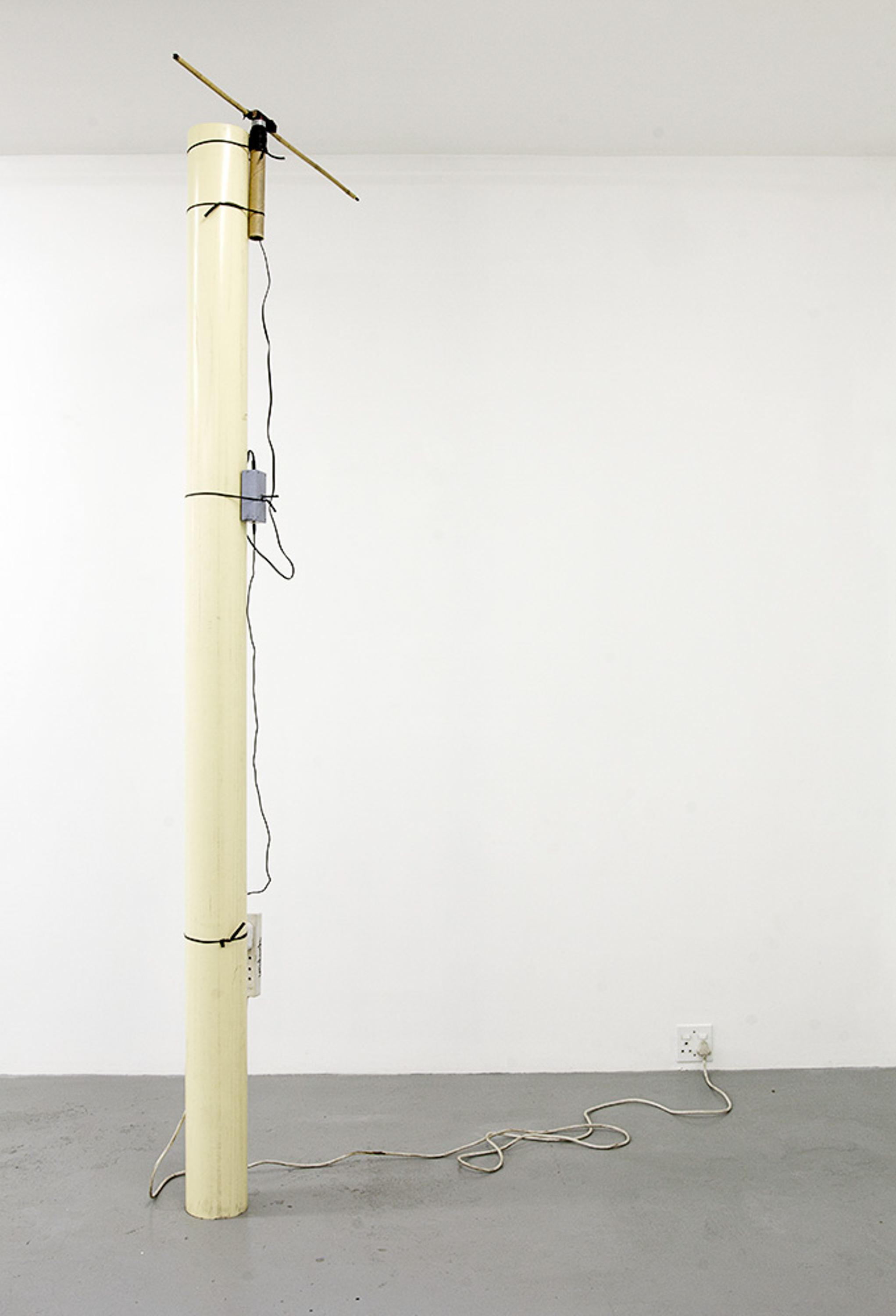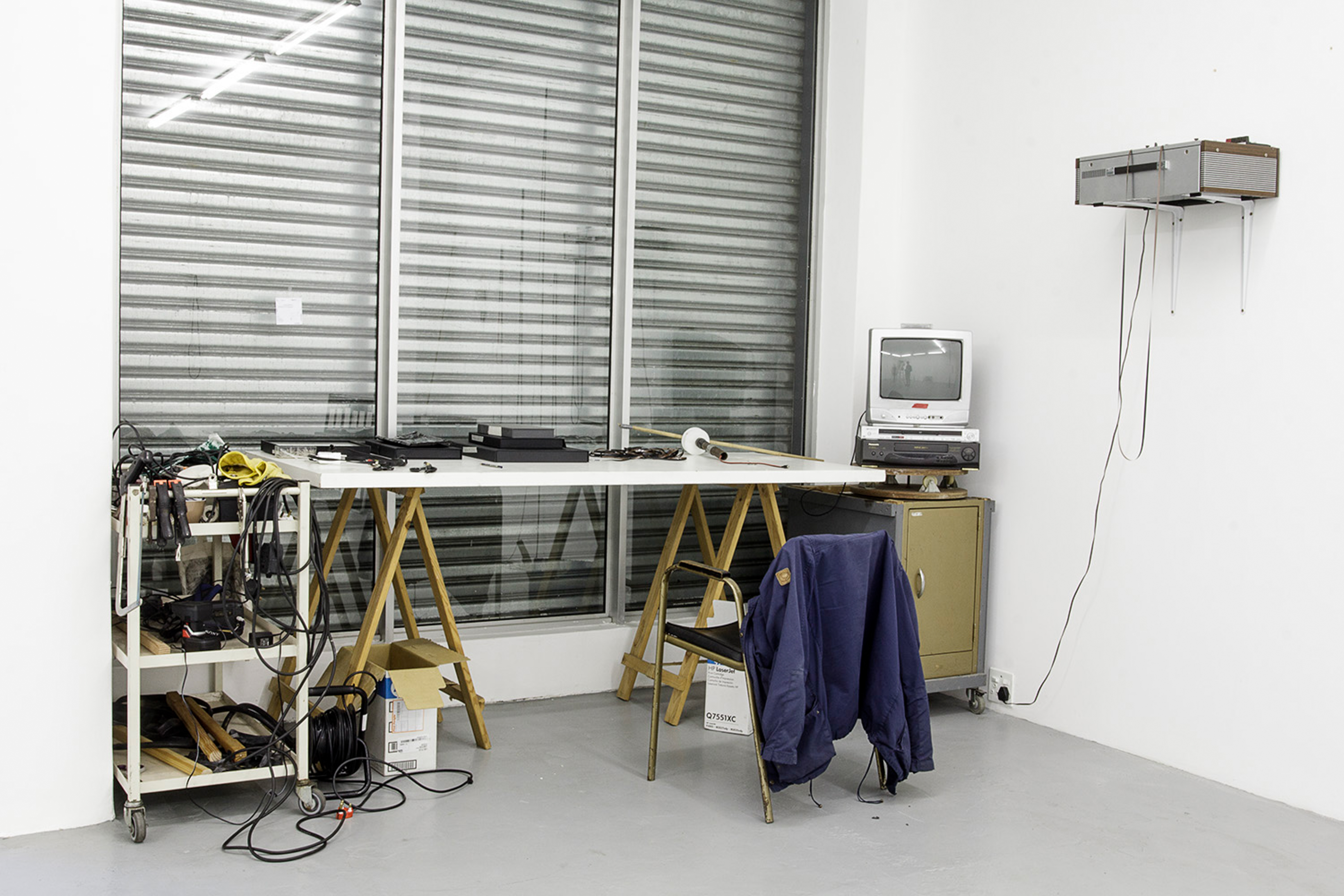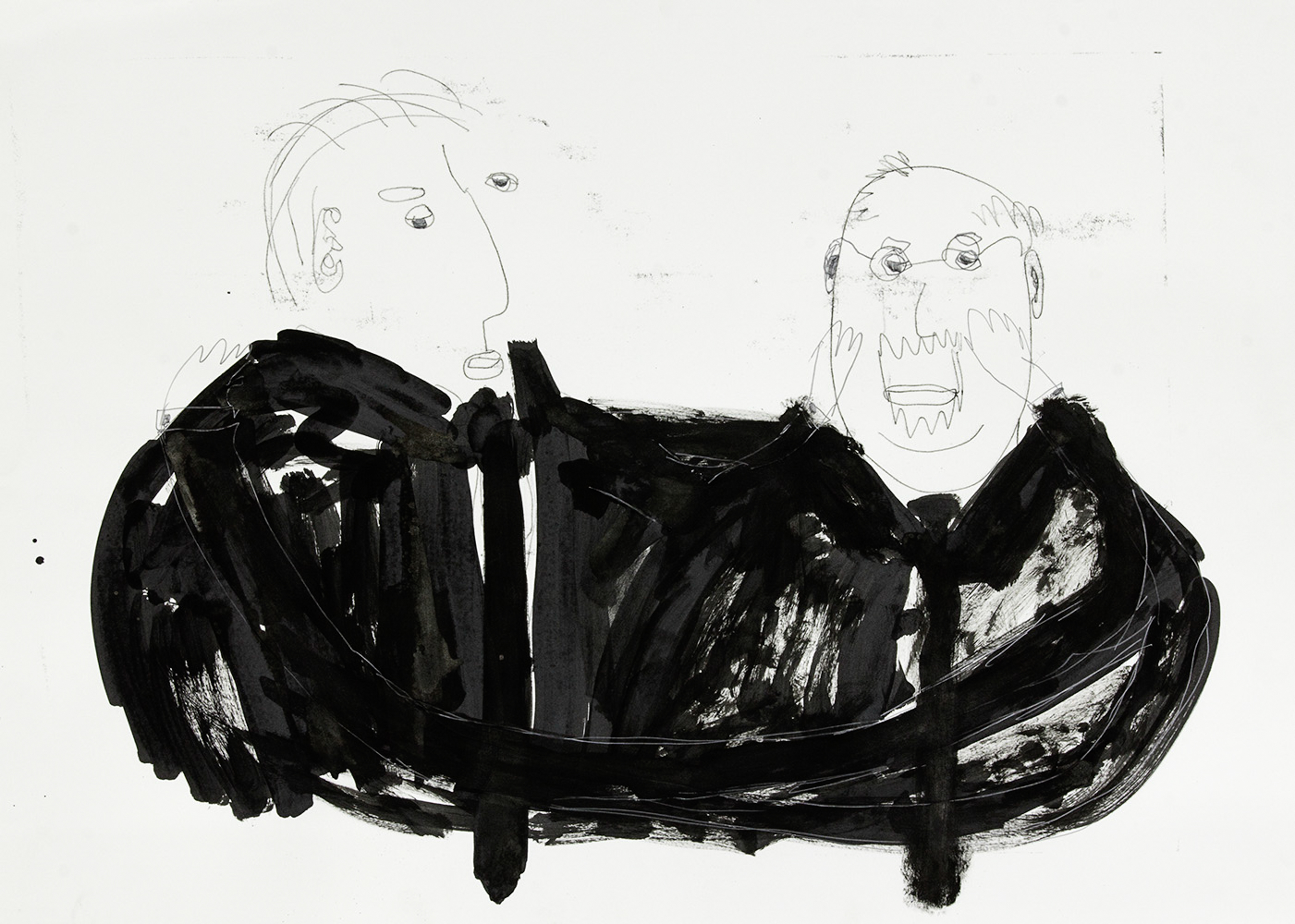











Jared Ginsburg’s third solo exhibition at blank projects, The Natural World parts 2, 3, 4, 5 and 6 follows on from Hoist and Body Parts, with traces and mutations of both.
Comprising a variety of forms including collage, audiotape, and kinetic sculpture, the exhibition offers results from a studio practice characterised by a coupling of absurd scientific experiment and improvised material play.
In general terms, Ginsburg is invested in the process of art-making as a means to explore alternative modes of knowledge production and transfer. He recognises art as a tool, a means to test and probe the world, hoping to nurture strategies for productive engagement with it. In pursuit of this, he creates rules, games and exercises that propel him into states of play and catalyse reactions between himself and his material partner, be it bamboo, ink, paper or other. The studio is significant in this equation; at once a lab, an instrument and a character in conversation.
What perhaps distinguishes this exhibition from previous processes is Ginsburg’s active redressing of discarded or sidelined works. While Hoist (2011) tested the capacity to transform objects from the mundane world to the symbolic and Body Parts (2013) negotiated a dynamic interplay between sculpture and drawing, The Natural World parts 2, 3, 4, 5 and 6 seems to be a record of the artist meandering through the studio, seeking out the remainders, the forgotten and the discarded.
The resulting exhibition moves on seamlessly from the previous two while pointing to a particular emphasis of Ginsburg’s current enquiry: an attention and appreciation for the continuous nature of the analogue world, and the disruption of that continuum through the act of discovery.
Comprising a variety of forms including collage, audiotape, and kinetic sculpture, the exhibition offers results from a studio practice characterised by a coupling of absurd scientific experiment and improvised material play.
In general terms, Ginsburg is invested in the process of art-making as a means to explore alternative modes of knowledge production and transfer. He recognises art as a tool, a means to test and probe the world, hoping to nurture strategies for productive engagement with it. In pursuit of this, he creates rules, games and exercises that propel him into states of play and catalyse reactions between himself and his material partner, be it bamboo, ink, paper or other. The studio is significant in this equation; at once a lab, an instrument and a character in conversation.
What perhaps distinguishes this exhibition from previous processes is Ginsburg’s active redressing of discarded or sidelined works. While Hoist (2011) tested the capacity to transform objects from the mundane world to the symbolic and Body Parts (2013) negotiated a dynamic interplay between sculpture and drawing, The Natural World parts 2, 3, 4, 5 and 6 seems to be a record of the artist meandering through the studio, seeking out the remainders, the forgotten and the discarded.
The resulting exhibition moves on seamlessly from the previous two while pointing to a particular emphasis of Ginsburg’s current enquiry: an attention and appreciation for the continuous nature of the analogue world, and the disruption of that continuum through the act of discovery.